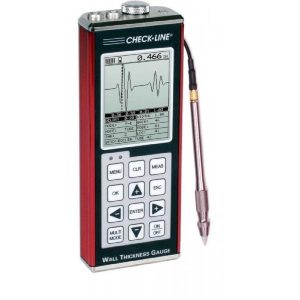
Ultrasonic thickness gauges are a valuable tool for corrosion monitoring and quality control. These are devices that use ultrasound to measure the thickness of materials such as metals, alloys, plastics, and ceramic compounds.
They are used in a variety of industrial fields ranging from corrosion analysis, thickness measurement, preventive maintenance, to pipeline analysis and tank thickness control.
Ultrasonic thickness gauges allow you to determine structural integrity or structural integrity during structural and protective inspections.
They also provide detailed information on the internal condition of the examined material and can identify any hidden problems such as cavities or inclusions.
Furthermore, this equipment can be used to verify the accuracy of the manufacturing process depending on the industry involved.
Direct measurement with ultrasonic thickness gauges is much faster than other traditionally used non-destructive methods such as radiography or x-ray scanning.
State-of-the-art ultrasound wave-based systems are equipped with characteristic additional features that offer greater flexibility and efficiency than previously available options.
For example, the most advanced systems have wireless and data transfer technologies that allow easy access to the system by different parts of the business to locate data online in near real time.
This solution is ideal in industrial environments where there is a large volume of materials to be controlled quickly and with reduced costs